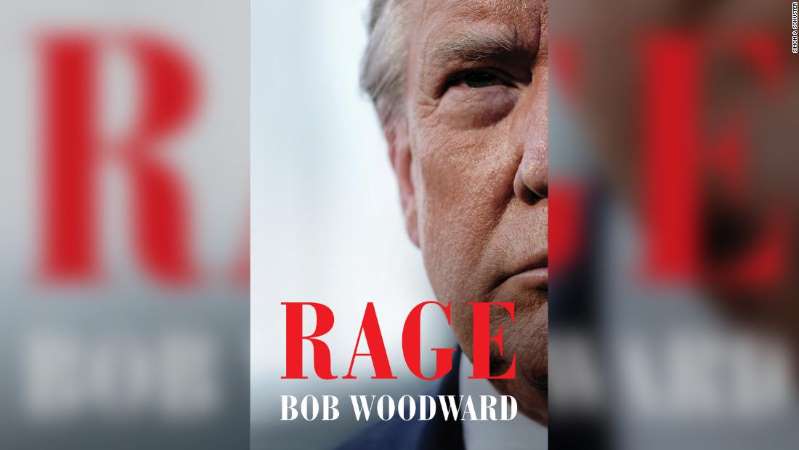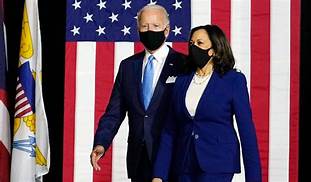BOOKBITES . .
Justice Ruth Bader Ginsburg, Champion Of Gender Equality, Dies At 87 by NPR in News on September 18, 2020 4:36 PM 
File: Supreme Court Justice Ruth Bader Ginsburg greets participants at an annual Women's History Month reception hosted by Pelosi in the U.S. capitol building on Capitol Hill in Washington, D.C. This event honored the women Justices of the U.S. Supreme Court: Associate Justices Ruth Bader Ginsburg, Sonia Sotomayor, and Elena Kagan. (Allison Shelley/Getty Images) Justice Ruth Bader Ginsburg, the demure firebrand who in her 80s became a legal, cultural and feminist icon, died Friday. The Supreme Court announced her death, saying the cause was complications from metastatic cancer of the pancreas. The court, in a statement, said Ginsburg died at her home in Washington surrounded by family. "Our nation has lost a justice of historic stature," Chief Justice John Roberts said. "We at the Supreme Court have lost a cherished colleague. Today we mourn but with confidence that future generations will remember Ruth Bader Ginsburg as we knew her, a tired and resolute champion of justice." Architect of the legal fight for women's rights in the 1970s, Ginsburg subsequently served 27 years on the nation's highest court, becoming its most prominent member. Her death will inevitably set in motion what promises to be a nasty and tumultuous political battle over who will succeed her, and it thrusts the Supreme Court vacancy into the spotlight of the presidential campaign. Just days before her death, as her strength waned, Ginsburg dictated this statement to her granddaughter Clara Spera: "My most fervent wish is that I will not be replaced until a new president is installed." She knew what was to come. Ginsburg's death will have profound consequences for the court and the country. Inside the court, not only is the leader of the liberal wing gone, but with the Court about to open a new term, Chief Justice John Roberts no longer holds the controlling vote in closely contested cases. Though he has a consistently conservative record in most cases, he has split from fellow conservatives in a few important ones, this year casting his vote with liberals, for instance, to at least temporarily protect the so-called Dreamers from deportation by the Trump administration, to uphold a major abortion precedent, and to uphold bans on large church gatherings during the coronavirus pandemic. But with Ginsburg gone, there is no clear court majority for those outcomes. 
UPCOMING POLITICAL BATTLE Indeed, a week after the upcoming presidential election, the court is for the third time scheduled to hear a challenge brought by Republicans to the Affordable Care Act, known as Obamacare. In 2012 the high court upheld the law by a 5-to-4 vote, with Chief Justice Roberts casting the deciding vote and writing the opinion for the majority. But this time the outcome may well be different. That's because Ginsburg's death gives Republicans the chance to tighten their grip on the court with another Trump appointment that would give conservatives a 6-to-3 majority. And that would mean that even a defection on the right would leave conservatives with enough votes to prevail in the Obamacare case and many others. At the center of the battle to achieve that will be Senate Majority Leader Mitch McConnell. In 2016 he took a step unprecedented in modern times: He refused for nearly a year to allow any consideration of President Obama's supreme court nominee. Back then, McConnell's justification was the upcoming presidential election, which he said would allow voters a chance to weigh in on what kind of justice they wanted. But now, with the tables turned, McConnell has made clear he will not follow the same course. Instead he will try immediately push through a Trump nominee so as to ensure a conservative justice to fill Ginsburg's liberal shoes, even if President Trump were to lose his re-election bid. Asked what he would do in circumstances like these, McConnell said: "Oh, we'd fill it." So what happens in the coming weeks will be bare-knuckle politics, writ large, on the stage of a presidential election. It will be a fight Ginsburg had hoped to avoid, telling Justice Stevens shortly before his death that she hoped to serve as long as he did—until age 90. "My dream is that I will stay on the court as long as he did," she said in an interview in 2019. 'TOUGH AS NAILS' She didn't quite make it. But Ruth Bader Ginsburg was nonetheless an historic figure. She changed the way the world is for American women. For more than a decade, until her first judicial appointment in 1980, she led the fight in the courts for gender equality. When she began her legal crusade, women were treated, by law, differently from men. Hundreds of state and federal laws restricted what women could do, barring them from jobs, rights and even from jury service. By the time she donned judicial robes, however, Ginsburg had worked a revolution. That was never more evident than in 1996 when, as a relatively new Supreme Court justice, Ginsburg wrote the court's 7-to-1 opinion declaring that the Virginia Military Institute could no longer remain an all-male institution. True, said Ginsburg, most women — indeed most men — would not want to meet the rigorous demands of VMI. But the state, she said, could not exclude women who could meet those demands. "Reliance on overbroad generalizations ... estimates about the way most men or most women are, will not suffice to deny opportunity to women whose talent and capacity place them outside the average description," Ginsburg wrote. She was an unlikely pioneer, a diminutive and shy woman, whose soft voice and large glasses hid an intellect and attitude that, as one colleague put it, was "tough as nails." By the time she was in her 80s, she had become something of a rock star to women of all ages. She was the subject of a hit documentary, a biopic, an operetta, merchandise galore featuring her "Notorious RBG" moniker, a Time magazine cover, and regular Saturday Night Live sketches. On one occasion in 2016, Ginsburg got herself into trouble and later publicly apologized for disparaging remarks she made about then-presidential candidate Donald Trump. But for the most part Ginsburg enjoyed her fame and maintained a sense of humor about herself. Asked about the fact that she had apparently fallen asleep during the 2015 State of the Union address, Ginsburg did not take the Fifth, admitting that although she had vowed not to drink at dinner with the other justices before the speech, the wine had just been too good to resist. The result, she said, was that she was perhaps not an entirely "sober judge" and kept nodding off. THE ROAD TO LAW Born in Brooklyn, N.Y., Ruth Bader went to public schools, where she excelled as a student — and as a baton twirler. By all accounts, it was her mother who was the driving force in her young life, but Celia Bader died of cancer the day before the future Justice would graduate from high school. Then 17, Ruth Bader went on to Cornell on full scholarship, where she met Martin (aka "Marty") Ginsburg. "What made Marty so overwhelmingly attractive to me was that he cared that I had a brain," she said. After her graduation, they were married and went off to Fort Sill, Okla., for his military service. There Mrs. Ginsburg, despite scoring high on the civil service exam, could only get a job as a typist, and when she became pregnant, she lost even that job. Two years later, the couple returned to the East Coast to attend Harvard Law School. She was one of only nine women in a class of over 500 and found the dean asking her why she was taking up a place that "should go to a man." At Harvard, she was the academic star, not Marty. The couple was busy juggling schedules, and their toddler when Marty was diagnosed with testicular cancer. Surgeries and aggressive radiation followed. "So that left Ruth with a 3-year-old child, a fairly sick husband, the law review, classes to attend and feeding me," said Marty Ginsburg in a 1993 interview with NPR. The experience also taught the future justice that sleep was a luxury. During the year of Marty's illness, he was only able to eat late at night; after that he would dictate his senior class paper to Ruth. At about 2 a.m., he would go back to sleep, Ginsburg recalled in an NPR interview. "Then I'd take out the books and start reading what I needed to be prepared for classes the next day." Marty Ginsburg survived, graduated, and got a job in New York; his wife, a year behind him in school, transferred to Columbia, where she graduated at the top of her law school class. Despite her academic achievements, the doors to law firms were closed to women, and though recommended for a Supreme Court clerkship, she wasn't even interviewed. It was bad enough that she was a woman, she recalled later, but she was also a mother, and male judges worried that she would be diverted by her "familial obligations."
A mentor, law professor Gerald Gunther, finally got her a clerkship in New York by promising Judge Edmund Palmieri that if she couldn't do the work, he would provide someone who could. That was "the carrot," Ginsburg would say later. "The stick" was that Gunther, who regularly fed his best students to Palmieri, told the judge that if he didn't take Ginsburg, Gunther would never send him a clerk again. The Ginsburg clerkship apparently was a success; Palmieri kept her not for the usual one year, but two, from 1959-61.
Ginsburg's next path is rarely talked about, mainly because it doesn't fit the narrative. She learned Swedish so she could work with Anders Berzelius, a Swedish civil procedure scholar. Through the Columbia Law School Project on International Procedure, Ginsburg and Berzelius co-authored a book. In 1963, Ginsburg finally landed a teaching job at Rutgers law school, where she at one point hid her second pregnancy by wearing her mother-in-law's clothes. The ruse worked; her contract was renewed before her new baby was born. While at Rutgers, she began her work fighting gender discrimination. THE 'MOTHER BRIEF' Her first big case was a challenge to a law that barred a Colorado man named Charles Moritz from taking a tax deduction for the care of his 89-year-old mother. The IRS said the deduction, by statute, could only be claimed by women, or widowed or divorced men. But Moritz had never married. The tax court concluded that the internal revenue code was immune to constitutional challenge, a notion that tax lawyer Marty Ginsburg viewed as "preposterous." The two Ginsburgs took on the case, he from the tax perspective, she from the constitutional perspective. According to Marty Ginsburg, for his wife, this was the "mother brief." She had to think through all the issues and how to fix the inequity. The solution was to ask the court not to invalidate the statute but to apply it equally to both sexes. She won in the lower courts. "Amazingly," he recalled in a 1993 NPR interview, the government petitioned the United States Supreme Court, stating that the decision "cast a cloud of unconstitutionality" over literally hundreds of federal statutes, and it attached a list of those statutes, which it compiled with Defense Department computers. Those laws, Marty Ginsburg added, "were the statutes that my wife then litigated ... to overturn over the next decade." In 1971, she would write her first Supreme Court brief in the case of Reed v. Reed. Ginsburg represented Sally Reed, who thought she should be the executor of her son's estate instead of her ex-husband. The constitutional issue was whether a state could automatically prefer men over women as executors of estates. The answer from the all-male supreme court: no. It was the first time the court had ever struck down a state law because it discriminated based on gender. And that was just the beginning. By then Ginsburg was earning quite a reputation. She would become the first female tenured professor at Columbia Law School, and she would found the Women's Rights Project at the ACLU. As the chief architect of the battle for women's legal rights, Ginsburg devised a strategy that was characteristically cautious, precise and single-mindedly aimed at one goal: winning. Knowing that she had to persuade male, establishment-oriented judges, she often picked male plaintiffs, and she liked Social Security cases because they illustrated how discrimination against women can harm men. For example, in Weinberger v. Wiesenfeld, she represented a man whose wife, the principal breadwinner, died in childbirth. The husband sought survivor's benefits to care for his child, but under the then-existing Social Security law, only widows, not widowers, were entitled to such benefits. "This absolute exclusion, based on gender per se, operates to the disadvantage of female workers, their surviving spouses, and their children," Ginsburg told the justices at oral argument. The Supreme Court would ultimately agree, as it did in five of the six cases she argued. Over the ensuing years, Ginsburg would file dozens of briefs seeking to persuade the courts that the 14th Amendment guarantee of equal protection applies not just to racial and ethnic minorities, but to women as well. In an interview with NPR, she explained the legal theory that she eventually sold to the Supreme Court. "The words of the 14th Amendment's equal protection clause — 'nor shall any state deny to any person the equal protection of the laws.' Well that word, 'any person,' covers women as well as men. And the Supreme Court woke up to that reality in 1971," Ginsburg said. During these pioneering years, Ginsburg would often work through the night as she had during law school. But by this time, she had two children, and she later liked to tell a story about the lesson she learned when her son, in grade school, seemed to have a proclivity for getting into trouble. The scrapes were hardly major, and Ginsburg grew exasperated by demands from school administrators that she come in to discuss her son's alleged misbehavior. Finally, there came a day when she had had enough. "I had stayed up all night the night before, and I said to the principal, 'This child has two parents. Please alternate calls.'" After that, she found, the calls were few and far between. It seemed, she said, that most infractions were not worth calling a busy husband about. THE SUPREME COURT'S SECOND WOMAN In 1980 then-President Jimmy Carter named Ginsburg to the U.S. Court of Appeals for the District of Columbia. Over the next 13 years, she would amass a record as something of a centrist liberal, and in 1993 then-President Bill Clinton nominated her to the Supreme Court, the second woman appointed to the position. She was not first on his list. For months Clinton flirted with other potential nominees, and some women's rights activists withheld their active support because they were worried about Ginsburg's views on abortion. She had been publicly critical of the legal reasoning in Roe v. Wade. But in the background, Marty Ginsburg was lobbying hard for his wife. And finally Ruth Ginsburg was invited for a meeting with the president. As one White House official put it afterward, Clinton "fell for her—hook, line and sinker." So did the Senate. She was confirmed by a vote of 96 to 3. Once on the court, Ginsburg was an example of a woman who defied stereotypes. Though she looked tiny and frail, she rode horses well into her 70s and even went parasailing. At home, it was her husband who was the chef, indeed a master chef, while the justice cheerfully acknowledged that she was an awful cook. Though a liberal, she and the court's conservative icon, Antonin Scalia, now deceased, were the closest of friends. Indeed, an opera called Scalia/Ginsburg is based on their legal disagreements, and their affection for each other. Over the years, as Ginsburg's place on the court grew in seniority, so did her role. In 2006, as the court veered right after the retirement of Justice Sandra Day O'Connor, Ginsburg dissented more often and more assertively, her most passionate dissents coming in women's rights cases. Dissenting in Ledbetter v. Goodyear in 2007, she called on Congress to pass legislation that would override a court decision that drastically limited back-pay available for victims. Note: Trump pushed his candidate and appointed her 9/26/2020. I am personally so disappointed by this. It will undo RBG's work and the present President is fully aware of this. Note: I adored this woman and atribute her with helping women and men in America, including myself, with the opportunity for equal rights in countless areas of life. RIP dear lady you will be so missed by so many and you will be loved and remembered forever! _____________________________________________________________________
AWC-SB Announces 2020 Fall Membership Campaign Prizes to be Awarded to Chapters and Members  The Santa Barbara Chapter of the Association for Women in Communications (AWC-SB) is offering incentives to new members who join during its Fall Membership Drive. Members who join by October 31st can save up to $75. To add to the fun, prizes will be awarded to the local member who recruits the most new members, as well as the AWC chapter that enrolls the most new members. .jpg)
AWC-SB Holiday Award Event 2019 For almost fifteen years, AWC-SB has been the premier local organization for communicators in a wide variety of fields. Monthly meetings, now on Zoom, help women at all stages of their careers stay current with important developments in the technology, practice, psychology, and ethics of communications. Upcoming meeting topics include Solutions Journalism (Oct 7), How to Create a 60-Second ‘Sizzle Reel Video (Nov 4) and the annual holiday party with celebrity guests (December). 
AWC-SB Group Communication Meetings at the Workzone Benefits of AWC-SB membership include the opportunity to connect with a network of local communicators, free or discounted admission to local chapter events and opportunities to take on leadership roles. In addition, members enjoy the benefits of belonging to a national organization which offers monthly webinars, a national jobs board, the prestigious Clarion Awards and affinity program discounts on everything from offices supplies to pet insurance. .JPG)
Monthly Professional Speaker Programs at Workzone (photo: Bonnie Carroll)
AWC-SB’s signature event is the Women of Achievement Awards which honors local women who have used their gifts as communicators for the good of the community. Although this year’s luncheon had to be postponed, the group plans to honor Barbara Ben-Horin, CEO of Girls Inc. of Greater Santa Barbara, and Luz Reyes-Martin, Executive Director of Public Affairs and Communications at Santa Barbara City College (SBCC) and the SBCC Foundation, on Friday, April 30, 2021. .JPG) (2).jpg)
2019 WAA Award Recipient Beth Farnsworth Ward KEYT3 & EmceeStarshine Rochelle (Photo: Bonnie Carroll) For more information about AWC-SB including details about membership levels, please visit www.awcsb.org or send questions to membership@awcsb.org.
.JPG)
2019 AWC-SB Board of Directors (Photo: Bonnie Carroll)
Many thanks to Past President Carolyn Jabs and welcome to our new President Lisa Osborn ABOUT AWC & AWC-SB AWC is a national organization which has been encouraging women to develop their skills as communicators for over 100 years. Founded in 1909 as Theta Sigma Phi, an honorary student journalism fraternity at the University of Washington, the organization has grown into a strong national network of communicators in a broad range of disciplines. Members have access to national learning and leadership opportunities including webinars, the nationally recognized Clarion awards, a communication-focused job board, a national blog and a conference in 2021.
______________________________________________________________ IMPORTANT READS . . . BEFORE THE VOTE!!!

Bob Woodward’s new book, Rage, is an unprecedented and intimate tour de force of new reporting on the Trump presidency facing a global pandemic, economic disaster and racial unrest. Woodward, the #1 international bestselling author of Fear: Trump in the White House, has uncovered the precise moment the president was warned that the Covid-19 epidemic would be the biggest national security threat to his presidency. In dramatic detail, Woodward takes readers into the Oval Office as Trump’s head pops up when he is told in January 2020 that the pandemic could reach the scale of the 1918 Spanish Flu that killed 675,000 Americans.
In 17 on-the-record interviews with Woodward over seven volatile months—an utterly vivid window into Trump’s mind—the president provides a self-portrait that is part denial and part combative interchange mixed with surprising moments of doubt as he glimpses the perils in the presidency and what he calls the “dynamite behind every door.”
At key decision points, Rage shows how Trump’s responses to the crises of 2020 were rooted in the instincts, habits and style he developed during his first three years as president.
Revisiting the earliest days of the Trump presidency, Rage reveals how Secretary of Defense James Mattis, Secretary of State Rex Tillerson and Director of National Intelligence Dan Coats struggled to keep the country safe as the president dismantled any semblance of collegial national security decision making.
Rage draws from hundreds of hours of interviews with firsthand witnesses as well as participants’ notes, emails, diaries, calendars and confidential documents.
Woodward obtained 25 never-seen personal letters exchanged between Trump and North Korean leader Kim Jong Un, who describes the bond between the two leaders as out of a “fantasy film.”
Trump insists to Woodward he will triumph over Covid-19 and the economic calamity. “Don’t worry about it, Bob. Okay?” Trump told the author in July. “Don’t worry about it. We’ll get to do another book. You’ll find I was right.” Note: The NYT released proof 9/27/2020 that Mr. Trump has lied all along about his business status and is being called a fraud. __________________________________________________________________ PLEASE READ THESE BEFORE VOTING - IT'S IMPORTANT TO HAVE ALL THE FACTS - YOUR COUNTRY IS DEPENDING ON YOU! 
I will be voting.Won't you please join me in making America Safe Again? 
|







